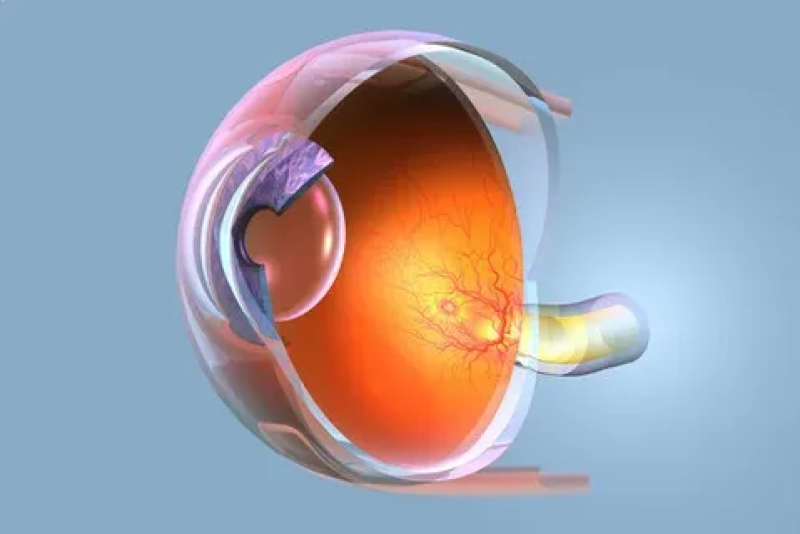Macular edema, characterized by swelling or thickening of the macula due to fluid accumulation, is a significant cause of vision impairment worldwide. The macula is a vital part of the retina responsible for central vision and sharp detail perception. This condition often emerges as a complication of diabetic retinopathy, retinal vein occlusion, or following eye surgeries and inflammations such as uveitis. The advancement in treatment options for macular edema has been a critical focus in ophthalmology, given the increasing prevalence of diabetes and related eye disorders globally. Understanding the comprehensive treatment landscape, including drug therapies, surgical interventions, and emerging technologies, is essential for managing this vision-threatening pathology.
Comprehensive Overview of Current Drug Therapies for Macular Edema Management
Pharmacological treatment forms the cornerstone of Macular Edema Treatment. Anti-vascular endothelial growth factor (anti-VEGF) agents are the most widely adopted therapeutic class for this condition, effectively reducing fluid accumulation and improving visual acuity. Drugs such as ranibizumab, aflibercept, and bevacizumab inhibit abnormal blood vessel growth and permeability, which are primary drivers of edema. These intravitreal injections are often administered on a monthly or bi-monthly basis depending on the response and disease severity. Corticosteroids also play a crucial role, especially in cases where anti-VEGF therapy is insufficient. Intravitreal corticosteroid implants or injections reduce inflammation and vascular permeability by suppressing immune responses, providing sustained drug delivery over several months. The choice between anti-VEGF agents and corticosteroids depends on patient-specific factors, disease etiology, and tolerance to treatment.
Navigating Surgical Interventions and Laser Therapies for Macular Edema
When pharmacotherapy alone does not sufficiently resolve macular edema, surgical and laser treatments become necessary adjuncts. Laser photocoagulation, traditionally used in diabetic macular edema, targets leaking blood vessels by coagulating them, thereby reducing fluid leakage. Though laser therapy is less common with evolving drug treatments, it remains a vital part of the treatment arsenal, especially in focal macular edema. Vitrectomy surgery is another intervention employed mainly for macular edema arising from vitreomacular traction or persistent edema refractory to other treatments. By removing the vitreous gel exerting traction on the retina, vitrectomy can alleviate edema and improve visual outcomes. Advances in micro-incision vitrectomy have enhanced the safety and recovery time of this procedure. Current research is directed toward refining surgical techniques, optimizing patient selection criteria, and combining pharmacologic agents with surgical interventions for enhanced efficacy.
Emerging Technologies Revolutionizing Treatment of Macular Edema
The landscape of macular edema treatment is rapidly evolving due to breakthrough technologies and novel therapeutic agents. Sustained-release drug delivery systems are one of the most promising trends, aiming to decrease the frequency of intravitreal injections while maintaining therapeutic drug levels over extended periods. Biodegradable implants releasing corticosteroids or anti-VEGF drugs are increasingly available, enhancing patient compliance and outcomes. Gene therapy is an exciting frontier, with ongoing clinical trials investigating gene editing methods to modulate VEGF production or inflammatory pathways within retinal cells. Additionally, personalized medicine approaches using biomarkers and imaging-guided diagnostics are facilitating tailored treatment interventions for macular edema patients. Advanced imaging techniques such as optical coherence tomography angiography (OCTA) provide detailed insights into retinal vascular health, allowing for precise monitoring of treatment response and disease progression.
Accessing Detailed Market Reports on Macular Edema Therapeutics and Innovations
For professionals and stakeholders exploring the macular edema treatment ecosystem with a commercial and strategic outlook, navigating comprehensive market research reports is crucial. These reports detail the competitive landscape, emerging product pipelines, regulatory frameworks, and geographic market trends shaping the development and adoption of macular edema therapies. Industry analysts can leverage these insights to identify growth opportunities within drug development, surgical device innovation, and emerging technologies. Robotics and artificial intelligence integration in treatment planning and surgical assistance also represent market segments gaining rapid traction. Companies investing in such cutting-edge solutions are poised to disrupt traditional macular edema care pathways. Market intelligence reports provide in-depth information on pricing dynamics, reimbursement policies, and patient demographics essential for informed decision-making.
Commercial Dynamics and Market Opportunities in Macular Edema Treatment Landscape
The macular edema treatment market is characterized by a growing patient population driven primarily by increasing cases of diabetes and retinal vascular diseases. The commercial landscape is dominated by pharmaceutical giants manufacturing anti-VEGF agents, yet there is a rising presence of biotech firms specializing in innovative delivery systems and gene therapy modalities. Strategic partnerships between pharmaceutical companies and medical device manufacturers are becoming more frequent, facilitating integrated care approaches. Additionally, evolving healthcare regulations and reimbursement frameworks impact market penetration and adoption rates globally. Commercial stakeholders monitor these factors closely to align product launches, pricing strategies, and distribution channels with evolving market needs. Advances in teleophthalmology and digital health platforms are further shaping patient engagement models, fostering early diagnosis, and timely intervention for macular edema patients.
Get This Report in Japanese Language: 黄斑浮腫の治療
Get This Report in Korean Language: 황반 부종 치료
Read More Articles Related to this Industry- Opioids Losing Sheen to Alternative Pain Management Methods
About Author:
Ravina Pandya, Content Writer, has a strong foothold in the market research industry. She specializes in writing well-researched articles from different industries, including food and beverages, information and technology, healthcare, chemical and materials, etc. (https://www.linkedin.com/in/ravina-pandya-1a3984191)
